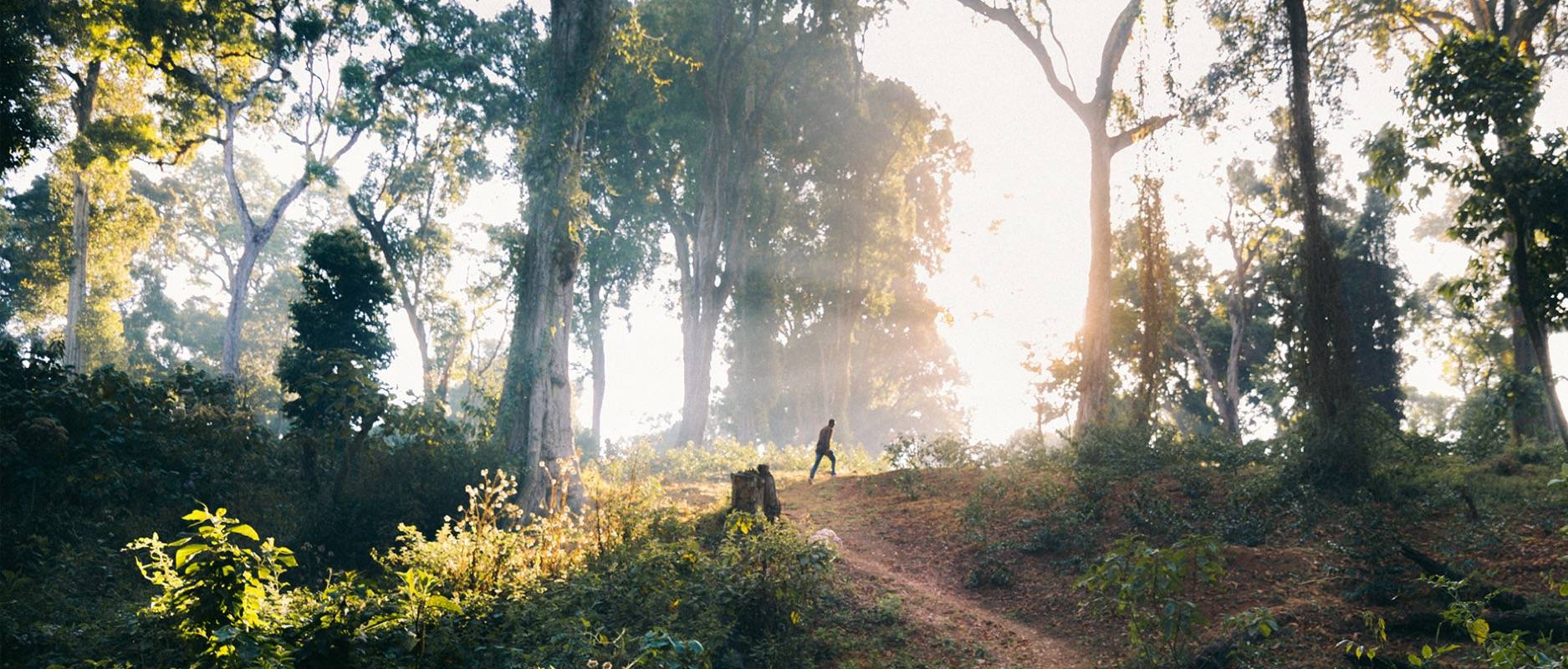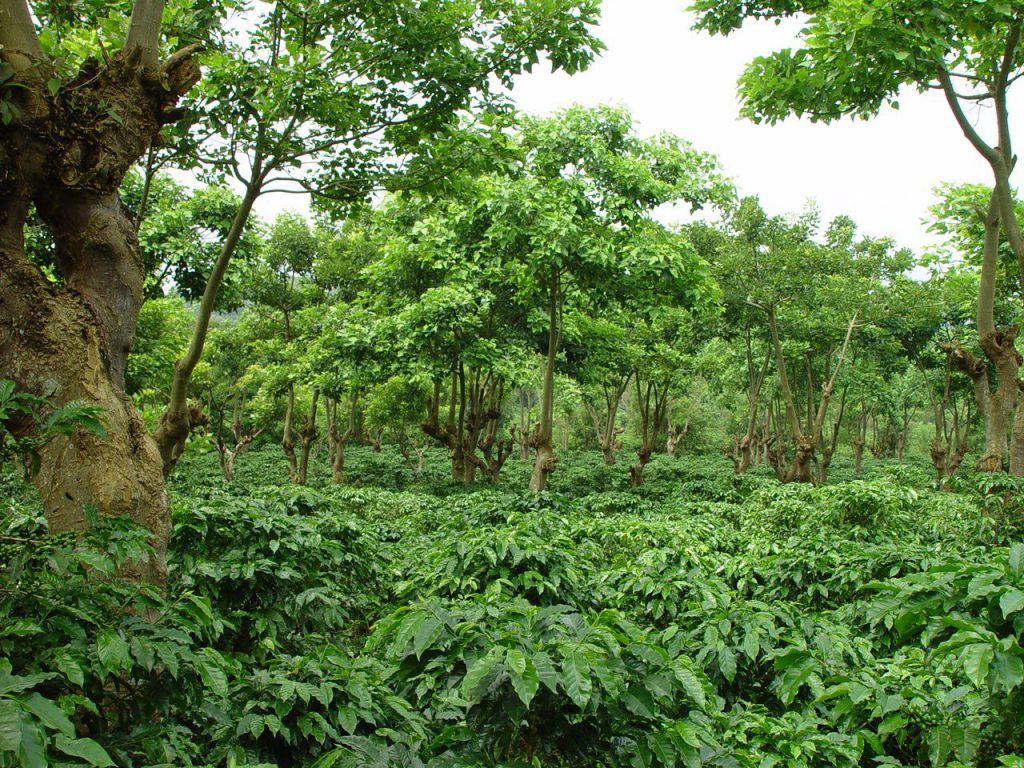WHAT IS SHADE-GROWN COFFEE? IS IT BETTER THAN FULL-SUN?

WHAT EXACTLY IS A SHADOW PLANTATION?
Shadow planting is a form of planting coffee trees together with different types of shade trees*. This cultivation system incorporates many ecological principles, and coffee grown in this way is marketed as “shade-grown”.
*Shade trees are large trees whose primary role is to provide protection to the surrounding plants due to its spreading canopy and crown.
In these types of plantation, coffee plants are grown under a canopy of shade trees. And since this cultivation method integrates the principles of ecology to promote natural symbiotic relationships, coffees grown in the shade can be considered a by-product of permaculture.
This planting configuration of the coffee tree is formed by a sophisticated agroforestry system, in which coffee is associated with other species in different levels. This cultivation method contributes to a more sustainable use of resources and to an interaction of the ecosystem and more natural breeding because it promotes greater animal and vegetable biodiversity.
The dense vegetation needed to produce shade-grown coffee helps to purify the air and filter the water, improving the quality of both.
In the next image you can see an example of a Shadow Plantation:

WHAT IS FULL-SUN PLANTING?
The “full sun coffee” or coffee grown in the sun is a configuration of the plantation which is inspired in the methodology of intensive agricultural practices.
In the 1970s, the idea of growing coffee in the sun was introduced to coffee farmers with the intention of increasing production. While coffee grown in the sun produces higher yields and subsequently offers farmers a higher profit, it has a negative impact on the ecosystem and the quality of the coffee.
In Guatemala for example, coffee is traditionally grown in the shade, so it has not been a major cause of deforestation in the country. However, throughout Central America, sun coffee cultivation has resulted in a loss of 1 million hectares of forest. And since coffee is the second most traded commodity in the world, the ways in which coffee is grown really count.
In the next image you can see an example of a full-sun plantation:

BENEFITS OF THE SHADOW PLANTATIONS
In a study in 2010, birds were excluded from a coffee plantation and resulted in a 70% increase in the percentage of coffee fruit infected by the “coffee borer bettle”, a parasitic species of insects. It is among the most harmful pests for coffee crops in the world.
Birds tend to go away when they cannot longer find bigger trees to build their nests on, so this gives us light of the importance of a balanced ecosystem in coffee farming and this has been demonstrated with shadow plantations.
The high diversity of species found in shadow plantations allows the formation of relatively complex food networks. Both birds and mammals play an important role in pest control by eating many herbivorous insects such as the coffee borer.
This helps farmers to avoid the use of pesticides that are harmful to agricultural workers but also to the ecosystem and those who consume coffee.
What is good for coffee, benefits people too.
Other benefits that shade-grown brings to the “cup”:
- Helps increase the longevity of the plant
- Protects the tree from the sun and wind.
- Less water required because there is less perspiration.
- It improves soil fertility.
- Reduction of erosion.
- The ripening is slower, therefore, the harvest is better.
- Increased production thanks to bee pollination.
Our first experience with Shade-grown coffee was the Tanzania Kilimanjaro, it gave us a new perspective on the qualities of this type of coffee.
CURRENT SITUATION
The trend of most coffee plantations goes towards the non-use of this form of cultivation. The method that’s being most adopted the full-sun (use of pesticides, fertilizers, lots of irrigation) especially where the increase in biodiversity and respect for the environment is not a priority.
This is most pronounced by the way the coffee sector has worked in recent years. coffee producers are not being paid what they deserve, so they have to focus on being more profitable just to make ends meet.
But all is not lost, there are many initiatives that are working to solve this problem by bringing greater awareness to the entire supply chain; from the importer to the end user on how a small price adjustment can positively impact a farmer’s life and, in return, give them the opportunity to grow a much better coffee.
This is a win-win situation, don’t you think?
A few examples of the initiatives are:
The shadow plantations have already demonstrated their great benefits for the environment and many farmers who have implemented it, mainly in rural areas and at high altitudes, where maintaining a good level of biodiversity is essential for cultivation, have found that the benefits can also be found in the cup.
This result in the cup comes thanks to the shading that guarantees constant humidity and reduces the temperature, thus the maturation of the cherry gets prolonged. This in turn, promotes a greater development of the sugars, thus obtaining a more aromatic and full-bodied coffee.
CONCLUSION
So the answer to the question “is shade-grown better than full-sun?” seems obvious, but for it to become a reality, there must be the participation of all those involved in the supply chain, from the bean to the cup, from the farmer to the drinker as some might say.
Shade-grown coffee is much better in terms of quality and environment, but we should also think about the well-being of the farmers who grow it before saying that it is better in every respect.
Have you ever tried a Shade-grown coffee? please let us know in the comments your thoughts! We will be more than happy to start a caffeine-filled conversation.
Sources:
- Rice, Robert (2010). “The Ecological Benefits of Shade-Grown Coffee: The Case for Going Bird Friendly”. Smithsonian.
- Shade Grown Coffee Movie
- Permaculture Principles